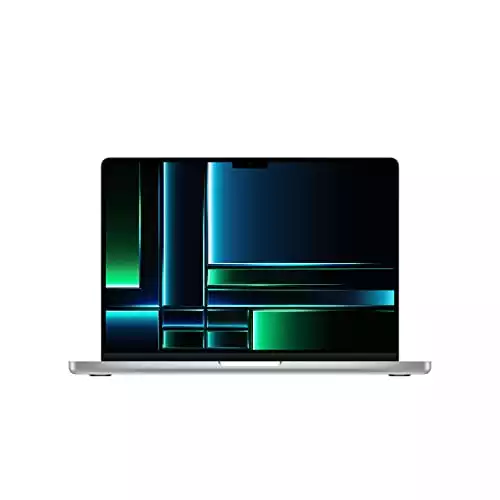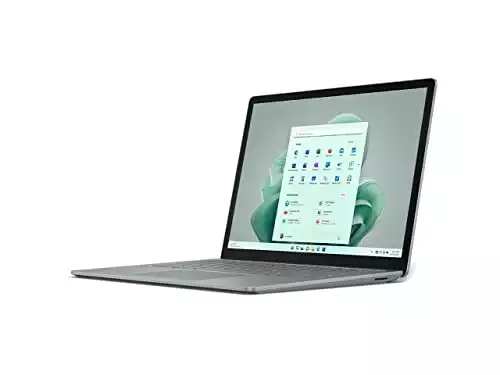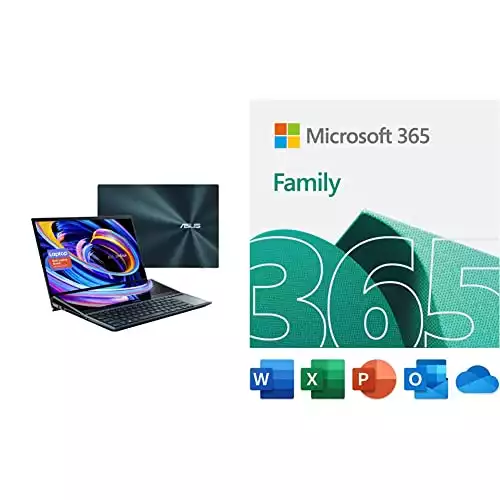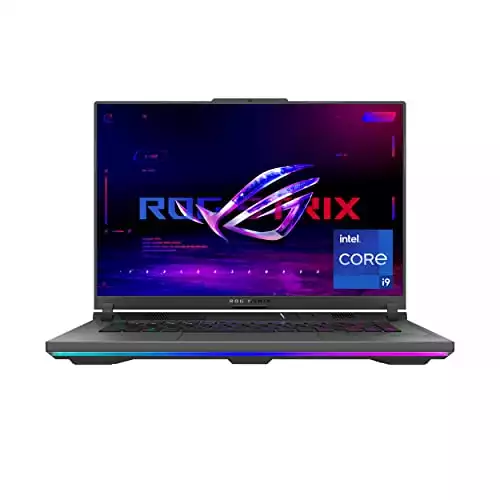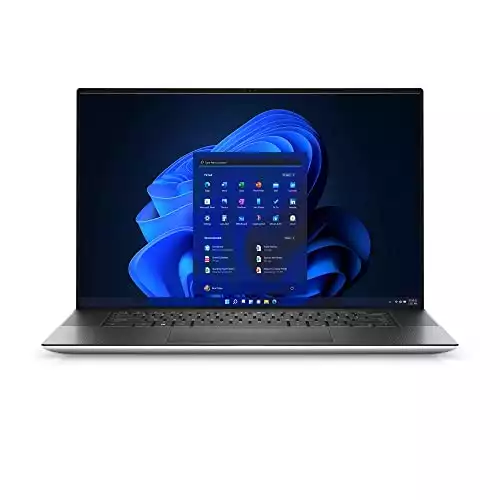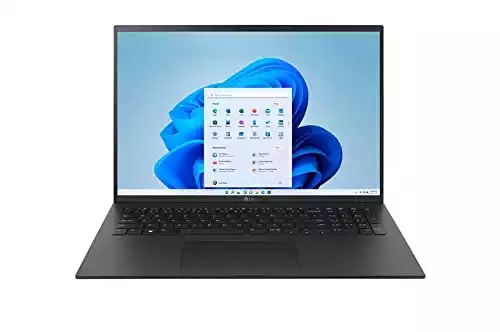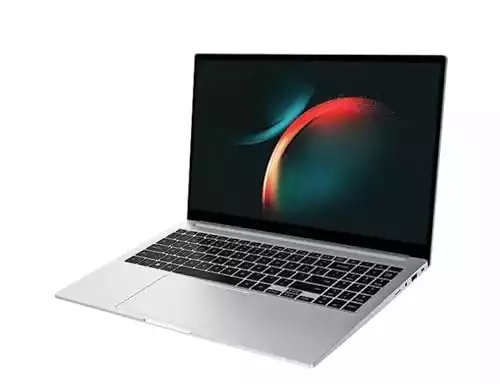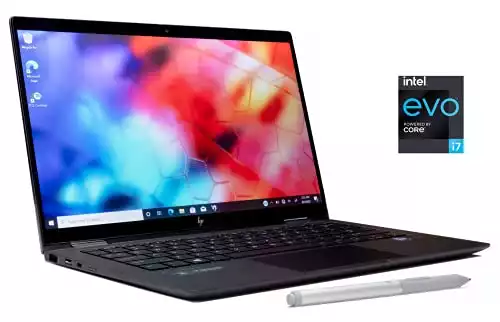If the only music your current laptop produces is of the fans crying under any minor workload. It’s time to get a new laptop for music production needs.
After countless hours of testing and comparing various laptops, I’ve compiled a list of the ten best laptops for music production. These laptops support industry-standard software like Ableton Live, Logic Pro X, and Pro Tools and will have you nodding your head to lightning-fast processing speeds and crystal-clear audio quality.

Read on and find the perfect music production laptop to hook up with your speakers and microphones!
List of the Best Laptops for Music Production in 2024
- Apple MacBook Pro M2 — Best Overall (Editor’s Choice)
- ASUS Zenbook Pro Duo — Best for Multitasking
- HP Spectre x360 — Best Versatile Device
- Microsoft Surface Laptop 4 — Best Value Laptop
- ASUS ROG Strix G16 — Best with the Latest Processor
- Dell XPS 17 — Best for Large Screen Lovers
- LG Gram 17 — Best Laptop for Beginners
- Galaxy Book 3 — Best for Battery Life in Windows Laptop
- Lenovo ThinkPad E14 — Best Budget Laptop
- Elite Dragonfly — Best Portable Laptop
What is the Best Laptop for Music Production 2024?
I recommend the Apple MacBook Pro M2 for music production, given its exceptional blend of performance, portability, and user-friendliness. Its superior capabilities and functionalities render it a valuable asset for music producers at any level, from beginners to seasoned professionals.
The Apple MacBook Pro with the M2 Max chip is the best laptop for music production, featuring powerful 12-core CPU and up to 38 GPU cores, 32GB unified memory, and an outstanding 14.2-inch Liquid Retina XDR display. Its studio-quality audio setup, Magic Keyboard with Touch ID, and Thunderbolt 4 connectivity enhance productivity.
- Outstanding Liquid Retina XDR display
- Studio-quality audio setup
- Thunderbolt 4 connectivity
- Slightly heavy at 3.6 pounds
- Distracting notch on the display
My Top 3 Picks
|
Primary Rating:
5.0
|
Primary Rating:
4.8
|
Primary Rating:
4.7
|
|
$2,537.41
|
|
$879.95
|
|
Screen Size:
14.2-inch Liquid Retina XDR display
|
Screen Size:
13.5" Touchscreen
|
Screen Size:
14-inch
|
|
RAM:
16 GB
|
RAM:
16 GB
|
RAM:
32 GB
|
|
Storage:
1TB SSD
|
Storage:
512 GB SSD
|
Storage:
1 TB SSD
|
|
Processor:
12-core CPU
|
Processor:
Intel Core i7 12th Gen i7-1265U
|
Processor:
Intel Quad Core i5-1135G7
|
|
Pros:
|
Pros:
|
Pros:
|
- Ample storage with high-speed production
- Stereo speakers with wide dynamic range
- Lightweight design with easy portability
- High-quality touchscreen display
- Powerful Processor
- Long Battery hours
- Offers a clear visual display
- Multiple ports for connecting
- Powerful processor
Detailed Overview of 10 Best Laptops For Music Production
Below, I have detailed my experience with the best laptops for recording music and production I have used.
1. Apple MacBook Pro M2 — Best Overall (Editor’s Choice)
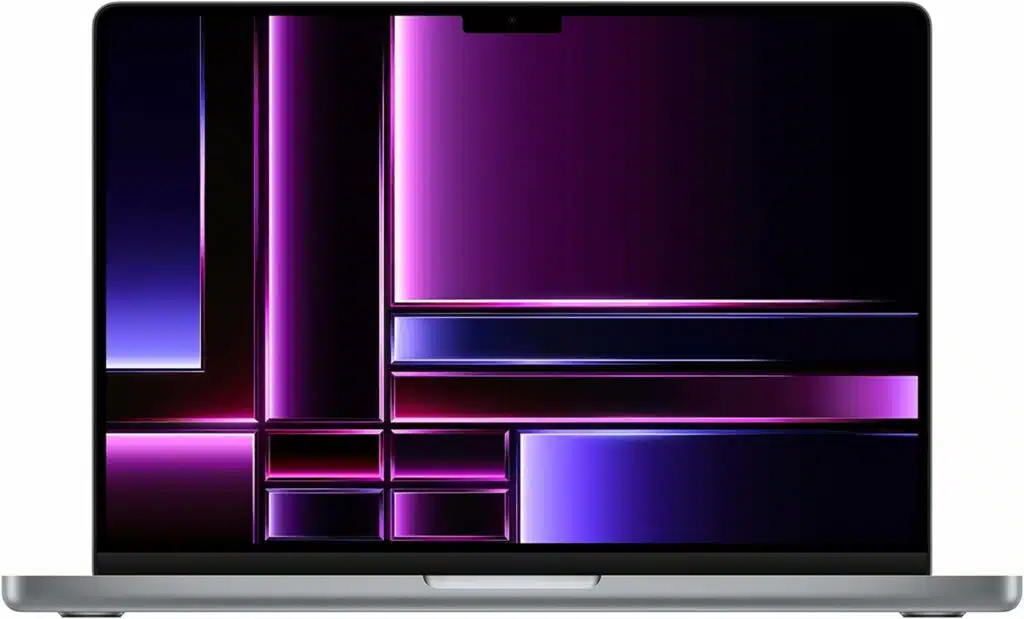
The overall best laptop for music production
CPU: 12-core CPU with 8 performance cores and 4 efficiency cores | RAM: 16GB | Storage: 1TB SSD | Display: 14.2-inch Liquid Retina XDR display | GPU: 30-core GPU | Battery: Up to 18 hours
Opening my sleek aluminum-clad Apple MacBook Pro with the M2 Max chip always excites me. This machine isn’t just about looks—it’s packed with features that make my professional life easier.
First off, let’s talk power. This laptop has the M2 Max chip, boasting 12 CPU cores and up to 38 GPU cores. With 32GB of unified memory, I can edit videos or run demanding music software without lag.
And the display? It’s outstanding. The 14.2-inch Liquid Retina XDR screen blows me away every time. Brightness? Over 1000 nits. Plus, it’s got ProMotion tech for smooth visuals. Watching HDR content on this thing is like having a private theater.
Virtual meetings are a big part of my day, so having a top-notch camera and audio setup is essential. The 1080p FaceTime HD camera makes me look sharp, and the studio-quality mic array and six-speaker sound system ensure crystal-clear communication.
Security matters, and the Magic Keyboard with Touch ID nails it. It’s fast, responsive, and adds that extra layer of protection. Plus, connecting gear is a breeze with Thunderbolt 4, HDMI, and MagSafe ports.
However, at 3.6 pounds, this laptop is a bit of a heavyweight. Carrying it around all day can be difficult without a comfortable laptop bag. And that notch on the display? It’s a bit distracting and doesn’t add much.
But despite those minor gripes, the Apple MacBook Pro with M2 Max chip is hands down the best tool for professionals. It’s fast, beautiful, and seamlessly integrates with all my other Apple gadgets.
“Apple’s 2023 flagship, the MacBook Pro 16-inch, marries a proven, immaculate design with a fireball M2 Max CPU for fierce power in media creation, gaming, and high-end professional tasks.” [Brian Westover, pcmag]
| PROS | CONS |
| ➕ Unparalleled performance for demanding music production tasks. | ➖ Premium price tag (but worth the investment). |
| ➕ Crystal-clear 14.2-inch display for precision editing and mixing. | ➖ No USB-A ports (easily solved with an adapter). |
| ➕ Spacious 1TB SSD storage for all your music files. | |
| ➕ Long-lasting battery life for mobile producers. |
Video Review:
Video Credits: Dave2D / YouTube
Latest Price on Amazon:
2. ASUS Zenbook Pro Duo — Best for Multitasking

Best Windows laptop for music production
CPU: Intel i9-12900H 14-Core | RAM: 16GB | Storage: 1TB SSD | Display: 15.6-inch 3840 x 2160 pixels | GPU: NVIDIA GeForce RTX 3070 | Battery: Up to 5 hours
Multitasking is important for hustlers! If you are looking for a laptop that can keep up with your work pace and handle multitasking efficiently, the Asus ZenBook Pro Duo is worth considering. Having worked on many audiovisual projects, I was excited to see how it could elevate my occasional music sessions.
First, let’s talk about the dual-screen setup. The 14-inch 4K touchscreen, known as the ScreenPad Plus, was a neat feature. I could keep my main music software on the primary 15.6-inch OLED 4K screen while having my mixer or plugins readily available on the secondary screen, which helped streamline my workflow.
Performance-wise, this laptop held its own. With its 12th-generation Intel Core i7-12700H Processor and NVIDIA GeForce RTX 3070 GPU, it handled everything I threw at it during my music sessions. Whether I was loading up heavy plugins or experimenting with virtual instruments, it didn’t miss a beat.
Storage and speed were also impressive. With 16GB LPDDR5 RAM and a 1TB PCIe NVMe M.2 SSD, this laptop booted up quickly and had plenty of space for my music projects, even the larger ones.
The primary OLED 4K screen was a standout feature for me. The vibrant colors and deep blacks made it easy to fine-tune audio and tweak plugins. Such clear visuals helped me stay focused on the details of my music production.
But it wasn’t all perfect. The built-in speakers, while clear, lacked the bass response I prefer for accurate sound monitoring. I relied on external speakers to get the full picture of my mixes. The battery life was decent but not exceptional, averaging around 5 hours. It meant I had to stay close to a power source during longer music sessions.
Overall, my experience with the Asus ZenBook Pro Duo was positive. It helped me easily dive into my music production projects, and I appreciated its multitasking capabilities. While it may not be my go-to laptop for music production, it certainly held its own during my occasional creative endeavors.
| PROS | CONS |
| ➕ Powerful processor and graphics card for the smooth running of music production software. | ➖ Short battery life can be limiting for longer recording or editing sessions. |
| ➕ Large, high-quality display for detailed editing and mixing. | ➖ Fan noise may be audible in quiet recording environments. |
| ➕ Lightweight and portable for easy transportation to and from recording sessions. | |
| ➕ Thunderbolt 3 port for high-speed data transfer and connecting external hardware. |
Latest Price on Amazon:
3. HP Spectre x360 — Best Versatile Laptop
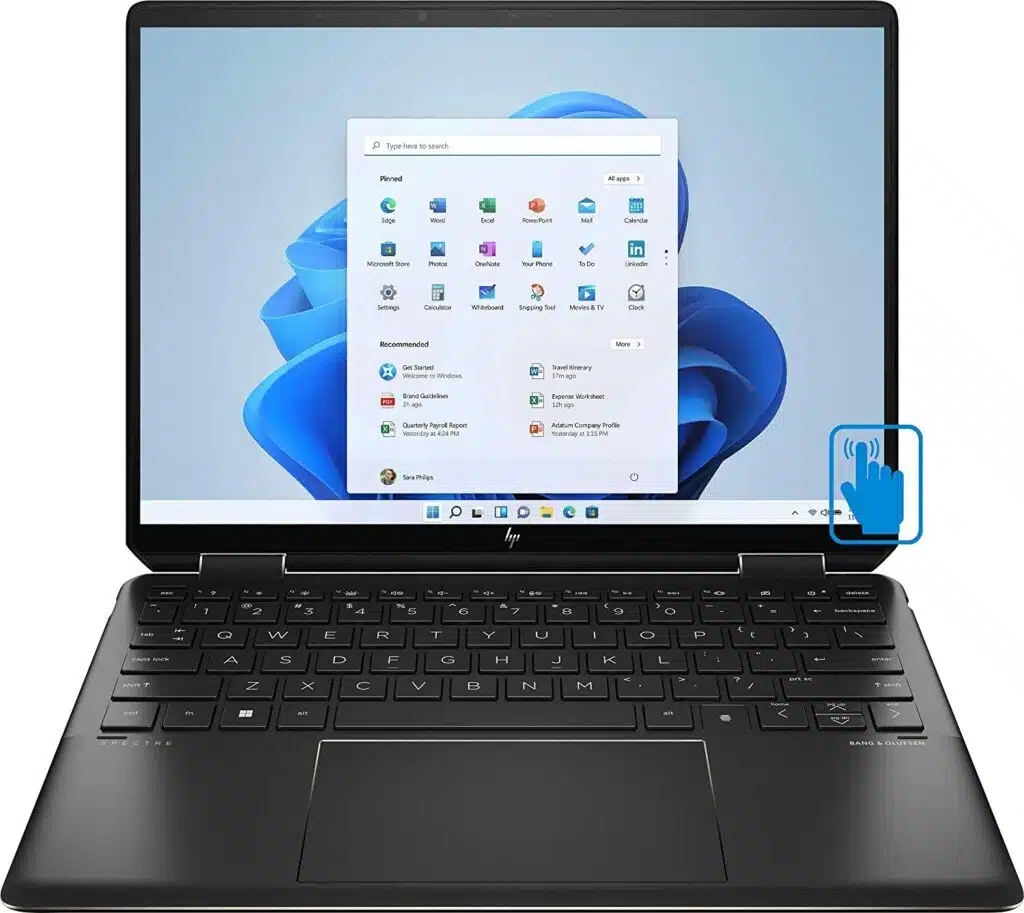
Best music production laptop for various professionals
CPU: 2.3 GH Intel 12th Gen i7-12700H | RAM: 16GB | Storage: 1TB SSD | Display: 16-inch 3072 x 1920 Pixels | GPU: Intel Iris Xe Graphics | Battery: Up to 15 hours
The HP Spectre x360 caught my attention with its performance and versatility, which seemed too good to pass up. And after putting it through its paces, I can confidently say it lives up to the hype.
The laptop’s processor, an Intel 12th Gen i7 CPU running at 2.3 GHz (with turbo boosts up to 4.7 GHz), handled all my software like Ableton Live, FL Studio, and Logic Pro without sweat. With 16GB DDR4 RAM and a 1TB NVMe PCIe M.2 SSD, it ran smoothly, letting me focus on making music instead of waiting for things to load.
The 16-inch display was another highlight. With a resolution of 3072 x 1920 pixels and 100% sRGB coverage, it was a step up from what I was used to. The low blue light emission and multitouch capabilities made long studio sessions easier on my eyes and fingers. I sometimes used the MPP2.0 stylus for more precise control over my music software.
The 5MP “True Vision” IR webcam was cool, too. It had all sorts of features, like Face Recognition for easy logins and sliders for adjusting things like brightness and white balance. The GlamCam panel even had a Beauty Mode to make me look good on video calls. In terms of battery life, this laptop lasted forever on a single charge, around 17 hours!
During my use, I did notice some drawbacks. The Intel Iris Xe Graphics wasn’t enough for heavy-duty graphics work, and due to the limited selection of ports, I had to use adapters for some of my music gear.
Looking back, though, the HP Spectre x360 was a solid value option for music production. It was powerful, the display was top-notch, and it was easy to take with me wherever I went.
| PROS | CONS |
| ➕ High-performance processor for running demanding music software. | ➖ Limited port selection. |
| ➕ Large and fast storage for storing and accessing large audio files. | |
| ➕ High-quality audio output for accurate monitoring and mixing. | |
| ➕ Portable and lightweight design for easy transportation between recording sessions. | |
| ➕ Plenty of RAM for smooth multitasking while working on music projects. |
Video Review:
Video Credit: Matthew Moniz / YouTube
Latest Price on Amazon:
4. Microsoft Surface Laptop 4 — Best Value Laptop
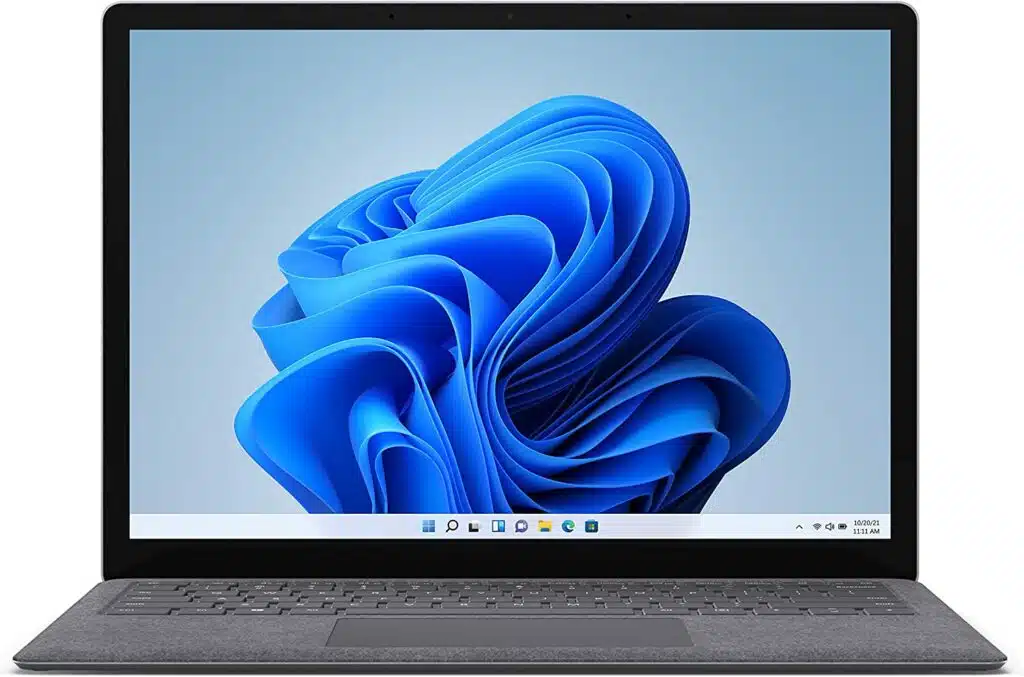
Best value music producer laptop
CPU: 11th Gen Intel Core processor | RAM: 16GB | Storage: 512GB | Display: 13.5-inch 2256 x 1504 pixels | GPU: Iris™ Plus graphics 950 | Battery: Up to 17 hours
Microsoft Surface Laptop 4 is the best value laptop in my lineup. This decision was heavily influenced by its compelling mix of performance, design, and price point—a rare trifecta.
Equipped with an 11th Gen Intel Core processor, 16GB LPDDR4 RAM, and a 512GB M.2 2230 NVMe PCIe SSD, the Surface Laptop 4 effortlessly handled the demanding nature of music production software. The speed increase of up to 70% over its predecessor enabled me to easily tackle complex compositions and intricate mixing tasks.
Despite its robust performance, the Surface Laptop 4 did have its limitations, notably the Iris™ Plus graphics 950. While adequate for most tasks and supporting my music production needs, it became evident that the laptop required a better graphic card for larger audio datasets in applications like Ableton Live. Yet, for projects of a mid-level scope, these challenges were minimal, and the device more than held its own.
The design and portability of the Surface Laptop 4 were also significant factors in my choice. Its sleek, lightweight form factor, coupled with the 13.5-inch PixelSense touchscreen display, made it ideal both in and out device of the studio.
The limited USB 3.0 ports were a slight inconvenience, necessitating additional adapters for a more complex setup, yet this was a small trade-off for the overall value the laptop provided.
In retrospect, my time with the Microsoft Surface Laptop 4 was marked by its ability to balance cost with performance effectively. It stood out as the best-value laptop in my collection, offering a reliable, high-performing platform for my music production needs without breaking the bank.
| PROS | CONS |
| ➕ Powerful processor for smooth performance when running music production software. | ➖ Limited upgrade options, particularly when it comes to RAM and storage. |
| ➕ High-quality touchscreen display with high resolution and color accuracy for precise visual work. | |
| ➕ Long battery life to keep you going throughout the day. | |
| ➕ Solid construction and durable materials for longevity and reliability. |
Latest Price on Amazon:
5. ASUS ROG Strix G16 — Best with the Latest Processor
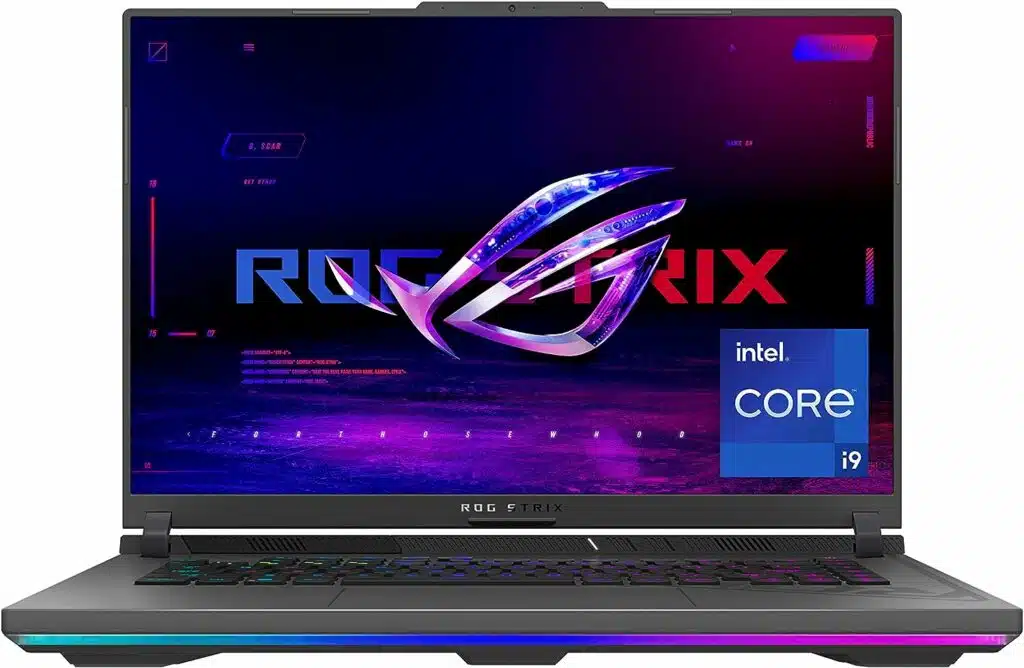
Best laptop for Ableton Live and various music production software
CPU: Intel Core i9-13980HX | RAM: 16GB | Storage: 1TB SSD | Display: 16-inch 1920 x 1200 pixels | GPU: NVIDIA GeForce RTX 4070 | Battery: Up to 4-5 hours
In my line of work, having a powerful processor isn’t just a luxury; it’s a necessity. That’s why the ASUS ROG Strix G16 blew me away with its Intel Core i9-13980HX processor, allowing me to handle the most demanding audio projects without a hitch.
The laptop’s 16GB of DDR5-4800MHz memory and 1TB of PCIe 4×4 storage were exceptional for multitasking and handling large project files. I particularly appreciated the lightning-fast loading times, which significantly reduced downtime and allowed for a smoother creative process.
One of the Strix G16’s most impressive aspects was its cooling system. Equipped with Thermal Grizzly’s Conductonaut Extreme liquid metal and three intake fans, it maintained optimal performance temperatures even under heavy loads.
The Strix G16’s visual experience was equally commendable. Its FHD 165Hz panel, covering 100% of the sRGB color space and featuring Dolby Vision and Adaptive-Sync, made it not just a tool for music production but also an excellent device for video editing and content review.
However, during my tenure with the Strix G16, its hefty weight of 10.16 pounds was a noticeable drawback, especially for a user valuing portability. Its size and weight made it less practical for on-the-go production or for those who frequently work in different locations.
To conclude, ASUS ROG Strix G16’s robust performance, advanced cooling system, and superior audio-visual features made it a standout choice for producing music at a professional level.
“The Asus ROG Strix G16 is a great all-round 16-inch laptop, being powerful, exceptionally stylish and packed with useful features.” [Dominic Bayley, pcworld]
| PROS | CONS |
| ➕ High-performance processor and GPU for handling demanding audio software and plugins. | ➖ Heavy and bulky design may not be ideal for on-the-go production or travel. |
| ➕ Ample storage for large audio files and sample libraries. | ➖ Short battery life may limit the use of the laptop for extended periods. |
| ➕ Fast loading times for efficient workflow. | |
| ➕ High-quality display for accurate visual representation of audio software and production projects. | |
| ➕ Good connectivity options for external audio interfaces and other peripherals. |
Latest Price on Amazon:
6. Dell XPS 17 — Best for Large Screen Lovers
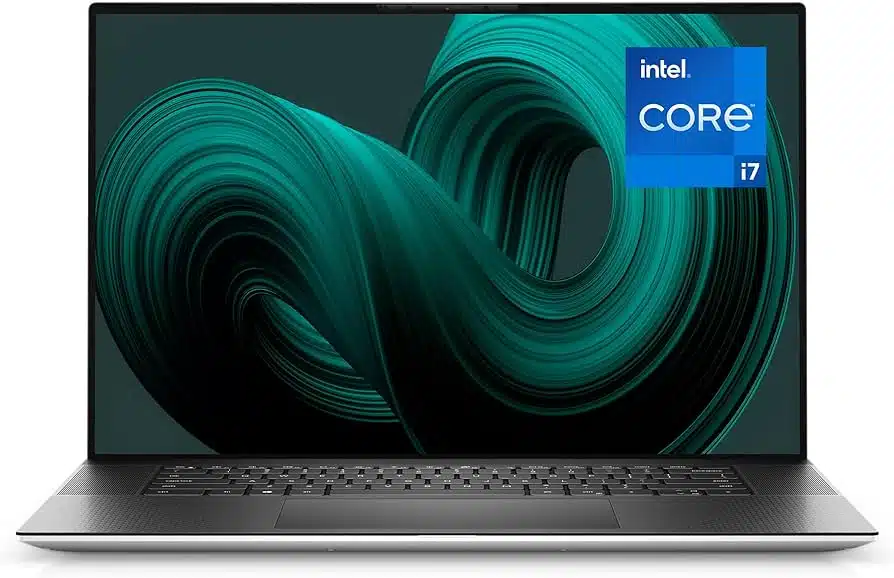
Best large laptop for music production
CPU: Intel Core i9-12900HK | RAM: 32 GB | Storage: 1TB SSD | Display: 17-inch 3840 x 2400 pixels | GPU: NVIDIA GeForce RTX 3060| Battery: Up to 10 hours
The Dell XPS 17 became one of my favorite tools because of its large screen. Its massive 17-inch display allowed me to see everything clearly, from the tiny details in my tracks to the complex arrangements that make my music come alive.
Packing a 12th-gen Intel Core i9-12900HK processor and 32GB of DDR5 memory, it handled everything from hefty DAW sessions to layers of synths and effects without a hitch. The graphics, powered by an NVIDIA GeForce RTX 3060, ensured all my visual needs were met, especially when juggling multiple plugins and software interfaces.
But what made a difference was the XPS 17’s audio capabilities. With Waves Nx 3D Audio tuned by Jack Joseph Puig, it felt like I was mixing in a professional studio. This, combined with a 1TB SSD, meant I had the space for all my files and could also access them instantly—no waiting around.
However, the XPS 17 comes with its challenges. Its hefty price tag and weight made it a significant investment and not the easiest to lug around. Yet, for the time I used it, I was willing to make compromises for the unmatched performance and workspace it offered.
Reflecting on my experience, the Dell XPS 17 set a high bar for what I expect in a music production laptop. Its blend of a large screen, top-notch performance, and immersive audio made it an invaluable part of my creative process. For anyone prioritizing a large display alongside stellar performance in their music production journey, the XPS 17 is certainly worth considering.
| PROS | CONS |
| ➕ Powerful 12th Gen Intel Core i9 processor and 32GB of DDR5 RAM for smooth and efficient multitasking. | ➖ The price point of the Dell XPS 17 may be higher than other laptops with similar specifications. |
| ➕ Waves Nx 3D Audio feature creates a three-dimensional soundscape of vibrant audio. | ➖ Difficult to use in smaller workspaces or on crowded tables. |
| ➕ NVIDIA GeForce RTX 3060 6GB GDDR6 graphics card delivers unparalleled performance when running popular digital audio workstations (DAWs). | |
| ➕ Long battery life of up to 10 hours allows extended use without needing a power outlet. |
Video Review:
Video Credit: The Tech Chap /YouTube
Latest Price on Amazon:
7. LG Gram 17 — Best Beginners Laptop for Recording Music
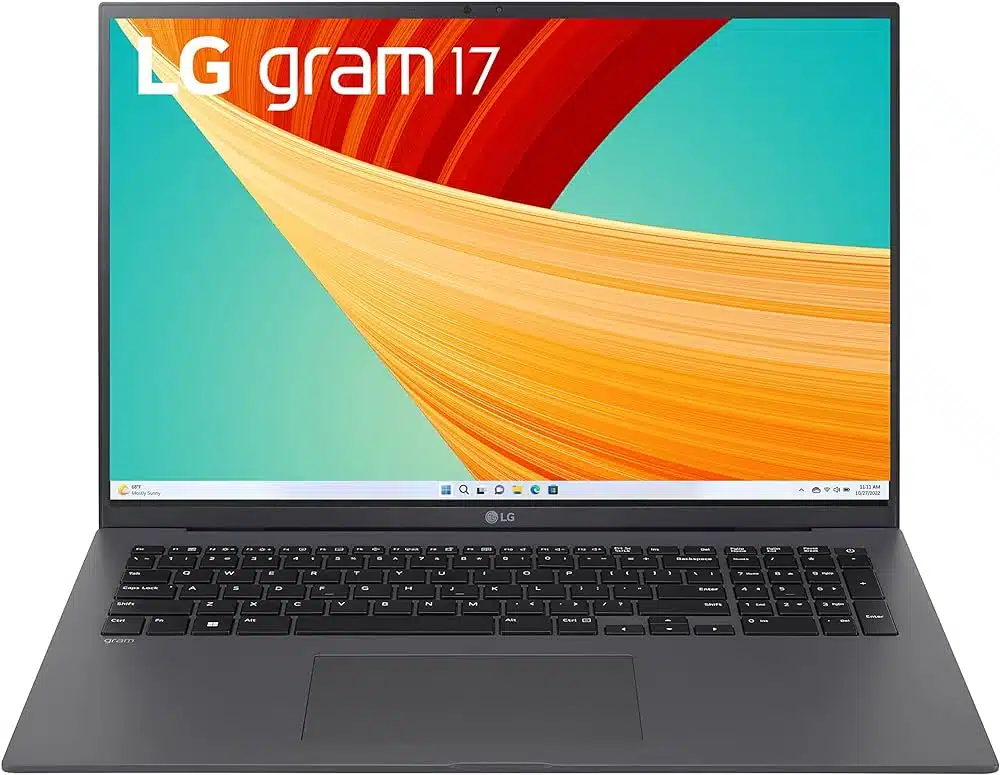
Best laptop for music production for beginners
CPU: Intel Quad-Core i7-1195G7 | RAM: 16 GB | Storage: 1TB SSD | Display: 17-inch 2560 x 1600 pixels | GPU: Intel Iris Xe Graphics | Battery: Up to 13 hours
If you’re just starting out in music production, I’ve got a great laptop suggestion for you: the LG Gram 17. This laptop has an 11th-generation Intel Core i7 processor that speeds up to 5.00 GHz. I never had to deal with any annoying slowdowns, even when playing around with complicated plugins or working on several tracks simultaneously.
This processor, combined with 16GB LPDDR4X 4266MHz SDRAM and a 1TB PCIe NVMe M.2 SSD, provided a smooth and efficient workflow, whether loading large sample libraries or saving extensive project files.
Another highlight was the display. The 17.0″ IPS LCD screen, boasting a resolution of 2560 x 1600 and covering DCI-P3’s 99% color gamut, offered not just a larger workspace but also exceptional color accuracy.
Connectivity was never an issue with the LG Gram 17, thanks to its array of ports, including two USB Type-C, two USB Type-A, one HDMI, and a headphone/microphone combo jack. The inclusion of a BROAG USB Extension Cable was a thoughtful addition, ensuring that connecting external devices like audio interfaces and MIDI controllers was hassle-free.
However, I encountered some limitations during my time with the LG Gram 17. While sufficient for most music production tasks, the integrated Intel Iris Xe Graphics fell short when it came to more graphics-intensive work, such as music video editing. Additionally, its slim and light design, although a boon for portability, occasionally led to thermal throttling, for which I had to use a laptop stand for better airflow.
Reflecting on my experience, the LG Gram 17 stood out as a formidable tool for music production, effectively balancing the scales of performance and portability. Its powerful processor, ample memory and storage, and stunning display left a lasting impression on me.
| PROS | CONS |
| ➕ High-resolution display provides accurate color representation for precise editing of music videos. | ➖ Integrated graphics may not be powerful enough for demanding graphical tasks. |
| ➕ Ample storage space to store large music projects and associated files. | ➖ Slim design may result in thermal throttling under heavy workloads. |
| ➕ Lightweight design makes it easy to transport to gigs or recording studios. | |
| ➕ The long battery life lasts for hours. |
Latest Price on Amazon:
8. Samsung Galaxy Book 3 — Best for Battery Life in Windows Laptop

Best battery laptop for audio production
CPU: 13th Gen Intel Core i7-1360P Processor | RAM: 16 GB | Storage: 512 GB SSD | Display: 15.6-inch 1920×1080 Pixels | GPU: ARM Mali-T604 | Battery: Up to 8 hours
Battery life was always a critical hurdle in my workflow, constantly searching for power outlets during work sessions, until I chose the Samsung Galaxy Book 3. This laptop, pocket-friendly yet packed with powerful features, kept me unplugged for longer periods, allowing me to focus more on creativity and less on battery levels.
Powered by a 13th Gen Intel Core i7-1360P processor, the Galaxy Book 3 never left me wanting more speed. Music production can be demanding, with multiple tracks, effects, and plugins running simultaneously, but this laptop easily handled it.
While not designed for graphic-intensive work, the integrated Intel Iris Xe Graphics was more than capable of handling music production tasks, including running visual-heavy software like FL Studio and Ableton. The 16GB LPDDR4X RAM and 512GB SSD provided a smooth multitasking experience, ensuring that loading samples or switching between programs was quick and efficient.
The 15.6-inch full HD display was another feature that greatly benefited my music production. The screen’s clarity and brightness made it easy to work on detailed music videos and audio waveforms, enhancing my editing precision.
Connectivity was never an issue with the Galaxy Book 3. The inclusion of multiple ports, including USB Type-C, USB 3.0, HDMI, and a headphone jack, meant I could easily connect all my peripherals and external devices without needing additional adapters. This was especially useful in studio settings where various equipment needed to be interconnected.
However, the laptop wasn’t without its drawbacks. Weighing in at 6 pounds, it was on the heavier side, challenging its portability. Additionally, while the integrated Intel Iris Xe Graphics was sufficient for most of my music production needs, there were moments when I wished for a dedicated GPU.
Looking back, the Samsung Galaxy Book 3 was a solid option for my music production journey. Its performance, impressive display, and adequate connectivity options made it a reliable tool for creating music.
| PROS | CONS |
| ➕ Long battery life, ensuring you can work on your music for extended periods without charge. | ➖ No dedicated graphics card may limit the laptop’s ability to handle intensive graphics processing. |
| ➕ High-quality display with vibrant colors and sharp images. | |
| ➕ Built-in fingerprint scanner for easy and secure login. | |
| ➕ Good value for the price compared to other laptops with similar specifications. |
Latest Price on Amazon:
9. Lenovo ThinkPad E14 — Best Budget Laptop
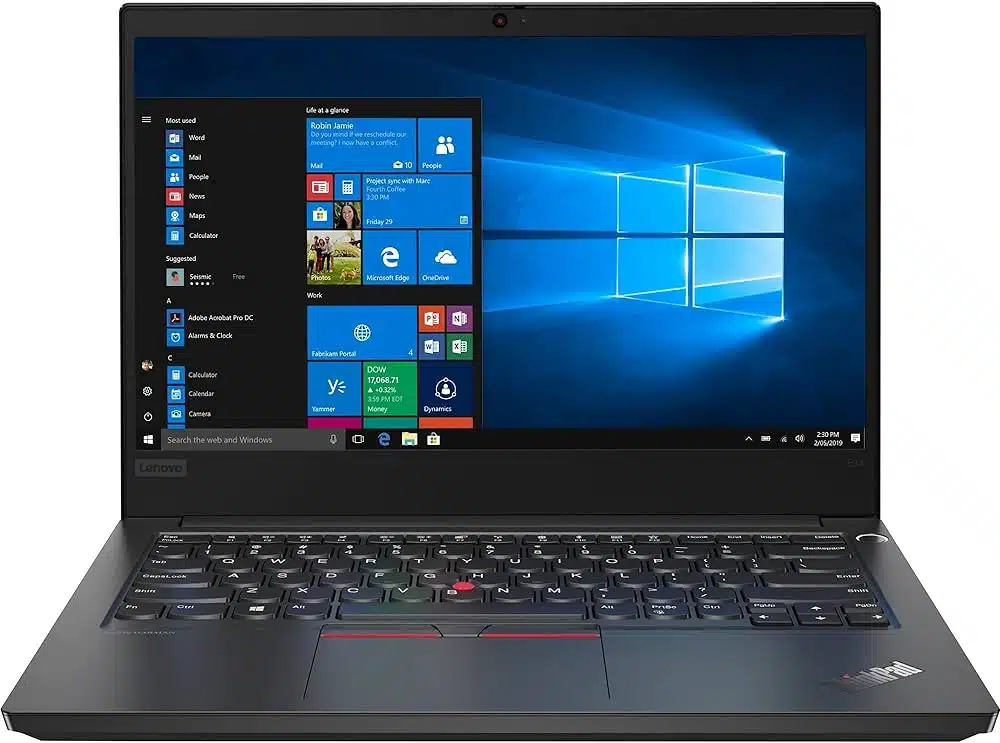
Best laptop for music production on budget
CPU: Intel Quad Core i5-1135G7 | RAM: 32 GB | Storage: 1 TB SSD | Display: 14-inch 1920×1080 | GPU: Intel Iris Xe | Battery: Up to 9.4 hours
My search for a laptop that could handle the rigors of music production without costing a fortune led me to the Lenovo ThinkPad E14. Its affordability and performance perfectly aligned with my needs.
At its core, the Lenovo ThinkPad E14 is powered by an Intel Quad Core i5-1135G7 processor. This processor efficiently managed multiple digital audio workstations (DAWs) and audio plugins, ensuring a smooth production experience without any lag.
Another critical feature was the 32GB DDR4 RAM, which allowed me to work with extensive multi-track projects and a host of virtual instruments without any performance hitches. Coupled with a 1TB NVMe SSD, storage was never a concern, providing ample space for my projects, samples, and libraries.
Despite my initial doubts about its display, the 14″ FHD screen was pleasant. It delivered a clear and vibrant visual experience, enhancing my ability to edit and arrange tracks precisely. This aspect of the ThinkPad E14 underscored that budget-friendly options could come with quality displays, essential for detailed music production tasks.
Another aspect of the ThinkPad E14 that stood out was its upgradability. Knowing I could easily expand the memory and storage as my production demands grew was reassuring. This flexibility meant the laptop could evolve alongside my skills and project complexity.
However, the absence of a dedicated graphics card was a limitation I encountered. While the integrated Intel Iris Xe Graphics sufficed for most of my music production needs, I found it lacking when delving into more graphically intensive tasks like video editing for music videos.
In retrospect, the Lenovo ThinkPad E14’s combination of a powerful processor, ample RAM and storage, and a quality display made it an excellent choice for someone on a budget.
| PROS | CONS |
| ➕ Offers a lot of power for its price, making it an attractive option for music producers on a budget. | ➖ May not be suitable for more demanding graphics and video editing tasks. |
| ➕ Powerful processor is capable of handling moderately demanding music production tasks. | ➖ May run hot under heavy load, which could impact performance. |
| ➕ Upgradeable RAM and storage allow flexibility and future-proofing. | |
| ➕ FHD Screen offers a clear visual display that is important for editing and arranging music tracks. | |
| ➕ Multiple ports for connecting external devices like audio interfaces, MIDI controllers, and external hard drives. |
Latest Price on Amazon:
10. Elite Dragonfly — Best Portable Laptop
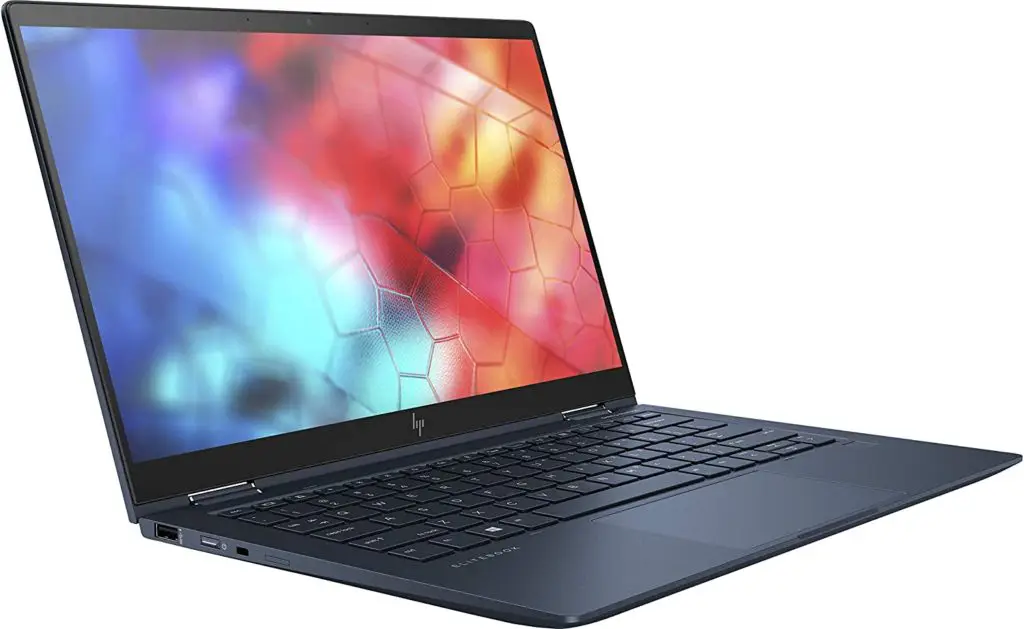
Best laptop for home studio and travel
CPU: FHD 11th Gen Intel EVO i7-1165G7 | RAM: 16 GB | Storage: 2 TB SSD | Display: 13.3-inch 1920 x 1080 Pixels | GPU: Integrated Iris Xe Graphics | Battery: Up to 15 hours
Portability is a big deal for me. I always prefer a laptop that’s easy to carry but doesn’t skimp on power. That’s why I went for the Elite Dragonfly. It promised the best of both worlds, and I was eager to see if it could live up to that.
Equipped with an 11th Gen Intel Evo Core i7-1185G7 processor and 16 GB LPDDR4X-4266 SDRAM, the Elite Dragonfly provided the necessary power to run demanding music production software without any hitches. The performance was smooth, whether I was working on complex arrangements or running multiple plugins simultaneously.
The storage solution in the Elite Dragonfly was another highlight. It features a 2TB PCIe SSD that supports PCIe Gen4 technology. This offered ample space for all my samples and projects and ensured quick access and transfer speeds.
The laptop’s 13.3-inch diagonal Anti-Glare FHD touchscreen display, featuring Corning Gorilla Glass 5, was particularly beneficial. The anti-glare screen allowed me to work for extended periods without eye strain, and the high brightness level made it easy to use in various lighting conditions.
Connectivity was another strong suit of the Elite Dragonfly. With two Thunderbolt 4 ports, a USB 3.1 Gen 1 port, an HDMI 2.0 port, and a headphone/microphone combo jack, I had no trouble connecting all my essential peripherals. This range of ports ensured I could easily integrate the laptop into my existing setup, from audio interfaces to external displays.
Despite its many strengths, the Elite Dragonfly did have its limitations. While perfect for portability, the screen size occasionally felt limiting when navigating complex DAW interfaces or multitasking extensively. Additionally, the laptop’s price point was higher than some alternatives, which might be a consideration for those with a strict budget.
Overall, the Elite Dragonfly was a reliable laptop in my music production endeavors. Its blend of performance, portability, and sleek design made it a valuable asset.
| PROS | CONS |
| ➕ Powerful processor and ample memory for running demanding music production software. | ➖ 13.3-inch display may be too small for some music producers. |
| ➕ 2TB PCIe SSD with fast storage technology for quick access to music files and projects. | ➖ The price point may be higher than similar laptops on the market. |
| ➕ Anti-glare FHD touchscreen display with high brightness levels for working in different lighting environments. | |
| ➕ Multiple ports for connecting a range of devices and peripherals. |
Latest Price on Amazon:
How I Selected and Tested the Best Laptops for Music Production
In evaluating the best laptops for music production, I followed a detailed two-step process: Selection and Testing. This guide is crafted to assist music producers in finding laptops that meet the rigorous demands of their profession. I undertook each step to ensure the recommendations provided would truly benefit those in the music production community.
Selection Process
I started the selection process with comprehensive research into the essential features and specifications crucial for a music production laptop. I gathered insights from fellow music producers, engaged in online forums, and reviewed professional critiques to pinpoint the critical attributes and potential drawbacks. This helped me define the criteria for selection.
Next, I contacted manufacturers and retailers directly to acquire their top laptop recommendations for music production. I also meticulously reviewed offerings on online marketplaces and tech websites, looking for laptops that met the established criteria.
After compiling a long list of laptops, I compared their specifications, pricing, and user feedback. This comparison allowed me to narrow down the selection to a few laptops that would best meet the needs of music producers.
Testing Process
With a shortlist of laptops, I conducted rigorous tests to assess their performance in typical music production scenarios. The aim was to replicate the real-world challenges music producers face. Here’s how I approached the testing:
- Tested DAW Compatibility: I ran each laptop with various popular Digital Audio Workstations (DAWs) to check for smooth operations and compatibility. My testing involved loading multiple projects, editing tracks, and exporting files to evaluate each laptop’s performance and stability.
- Assessed Plugin Performance: I installed various resource-intensive plugins, including virtual instruments and effects, to determine how each laptop handled heavy workloads. During these tests, I closely monitored CPU usage, RAM consumption, and overall system stability.
- Conducted Stress Tests: Using benchmarking tools like Cinebench, Geekbench, and AIDA64, I evaluated each laptop’s overall performance, cooling efficiency, and thermal management. These tests were crucial in understanding how each laptop would cope with the demands of professional music production.
- Measured Audio Latency: I employed tools such as DPC Latency Checker or LatencyMon to measure audio latency, ensuring the laptops met the precise requirements for music production. To find optimal configurations, my testing varied across different buffer sizes, sample rates, and audio interfaces.
- Checked Noise Levels: I measured the noise levels produced by each laptop’s fans under heavy workloads with a decibel meter, ensuring they remained within acceptable parameters to not interfere with the creative process.
- Evaluated Display Quality: I examined the laptops’ displays for color accuracy, brightness, and sharpness. This evaluation was particularly important for tasks related to music production that also involve video editing.
- Tested Audio Quality: I tested the laptops’ built-in sound cards or audio interfaces by recording and playing back audio to ensure they delivered high-quality sound.
- Assessed Portability and Build Quality: I evaluated each laptop’s build quality, weight, and portability, focusing on the needs of music producers who travel frequently.
- Tested Battery Performance: I tested the battery life of each laptop under heavy processing workloads to confirm they could support prolonged music production sessions without the need for immediate recharging.
Through this meticulous selection and testing process, I identified the top laptops that fit the technical specifications required for music production and excel in real-world performance. This ensures that the recommendations provided are reliable, powerful, and perfectly suited to the needs of music producers.
Buying Guide: Best Laptops for Music Production
If you’re still confused about which music production laptop best fits you, check out the buying guide below and make an informed decision.
🔧 At Least an i5 5th Generation Processor
Music production requires a powerful CPU, especially when using multiple plugins, virtual instruments, and processing audio in real-time. Look for at least an Intel i5 5th generation processor or equivalent AMD processor for smooth performance. However, consider upgrading to an Intel i7 or i9, like in the HP Spectre x360, for more demanding projects or professional use.
🧠 8 GB RAM is Enough to Get You Started
RAM allows your laptop to handle multiple tasks simultaneously, which is crucial when running multiple plugins, virtual instruments, or large projects. A minimum of 8GB RAM is recommended, but 16GB or higher, like in ASUS Zenbook Pro Duo or Dell XPS 17, is ideal for better performance and future-proofing your system.
💾 Aim for a Minimum 512 GB SSD Storage
Music production involves working with large audio files, samples, and projects, so having sufficient storage is essential. A 512GB SSD is the minimum but consider a larger SSD like in the Apple MacBook Pro M2 or LG Gram 17 if you have a vast library of samples or work on multiple projects simultaneously.
🖥️ High-Resolution Display for Great Visuals
A high-resolution display (Full HD or 4K) is great for accurately representing audio waveforms, visualizers, and plugin interfaces. A minimum 13-inch screen is recommended, but a 15-inch or larger display like the Dell XPS 17 will provide a more comfortable workspace.
🔋 Extended Battery Life for Long Sessions
Battery life is crucial for extended sessions or live performances without access to power outlets. Aim for a laptop with at least 5 hours of battery life. However, a laptop with 6-8 hours of battery life, like the Microsoft Surface Laptop 4 or Apple MacBook Pro M2, will provide more flexibility and convenience during long sessions or travel.
🔌 Wide Connectivity Option for Connecting Peripherals
Having multiple connectivity options is essential for connecting audio interfaces, MIDI controllers, and other peripherals. Ensure the laptop has Wi-Fi, Bluetooth, USB-C, USB-A, HDMI, and audio interface compatibility (e.g., Thunderbolt, USB) like the LG Gram 17. An SD card slot can also help transfer files or expand storage.
🌡️ Noise and Heat Management for Maximum Performance
Choose a capable music production laptop with efficient cooling systems like the ASUS ROG Strix G16 to minimize fan noise and prevent overheating during long sessions and heavy processing tasks. Low noise operation is crucial for recording and monitoring in quiet environments.
💻 Compatible Operating System for Software
Select an operating system (Windows or macOS) compatible with your preferred music production software and plugins. Both platforms have a wide range of professional music production applications, so choose the one you’re most comfortable with, or that offers the best compatibility with your workflow.
🛠️ Durable Build Quality and Design
Opt for a solid laptop with durable construction, resistance to wear and tear, and a professional design that reflects your creative nature. A sleek design and lightweight build can make transportation to gigs, studios, or collaborative sessions more manageable.
🖱️ Responsive Keyboard and Trackpad
Choose a laptop with a comfortable, responsive keyboard for extended use. Backlit keys can help work in low-light conditions or during live performances. A high-quality trackpad can improve your workflow by providing smooth navigation and support for multi-touch gestures. Some music developers may prefer using an external mouse for more precise control, so consider your personal preferences and workflow.
Frequently Asked Questions
Below, I have answered some frequently asked questions about the best laptops for music production:
What laptops do music producers use?
Music producers use laptops with high processing power and good audio capabilities. Popular choices include Apple MacBook Pro, Dell XPS, and HP Spectre. Some producers also prefer to use laptops specifically designed for music production, such as the Razer Blade or the ASUS ROG Zephyrus G15.
How much RAM is needed on a laptop for music production?
The amount of RAM needed on a laptop for music production depends on the complexity of the project and the type of digital audio workstation (DAW) being used. As a general rule of thumb, 8GB of RAM is the minimum requirement for basic music production, but 16GB or more is recommended for more complex projects.
How much RAM do I need for DAW?
The amount of RAM you need for DAW depends on the specific DAW and the project's complexity. However, 16GB of RAM is generally recommended for most music production projects, and some DAWs may require even more.
Is MacBook good for music production?
Yes, MacBook is good for music production and popular among music producers due to its reliable performance, high-quality build, and good audio capabilities. Many popular music production software programs, such as Logic Pro X and Ableton Live, are optimized for Macs.
Which processor is best for music production?
The best processor for music production is one with high clock speed and multiple cores. The Intel Core i7 or i9 and the AMD Ryzen 7 or 9 are popular choices among music producers. Processors with hyper-threading or simultaneous multithreading (SMT) can improve performance by allowing for more efficient use of resources.
Unleashing Creativity: Choosing the Ideal Music Production Laptop
Choosing the best laptop for music production is a critical decision that can greatly impact your creative workflow and productivity. By prioritizing factors such as processing power, RAM, storage capacity, audio interface compatibility, and portability, you can ensure a seamless and efficient music production experience.
I recommend the Apple MacBook Pro M2 for music production as it offers a winning combination of power, portability, and ease of use. Its top-notch performance and features make it a worthwhile investment for amateur and professional music producers.

